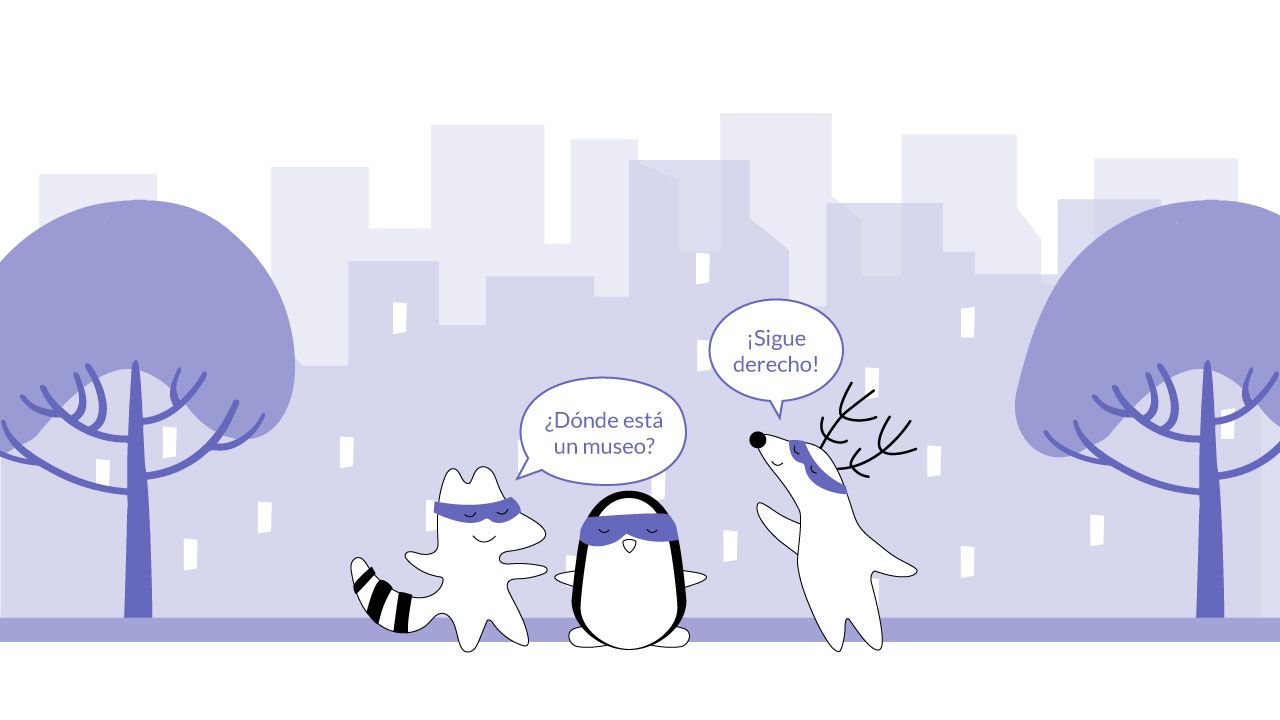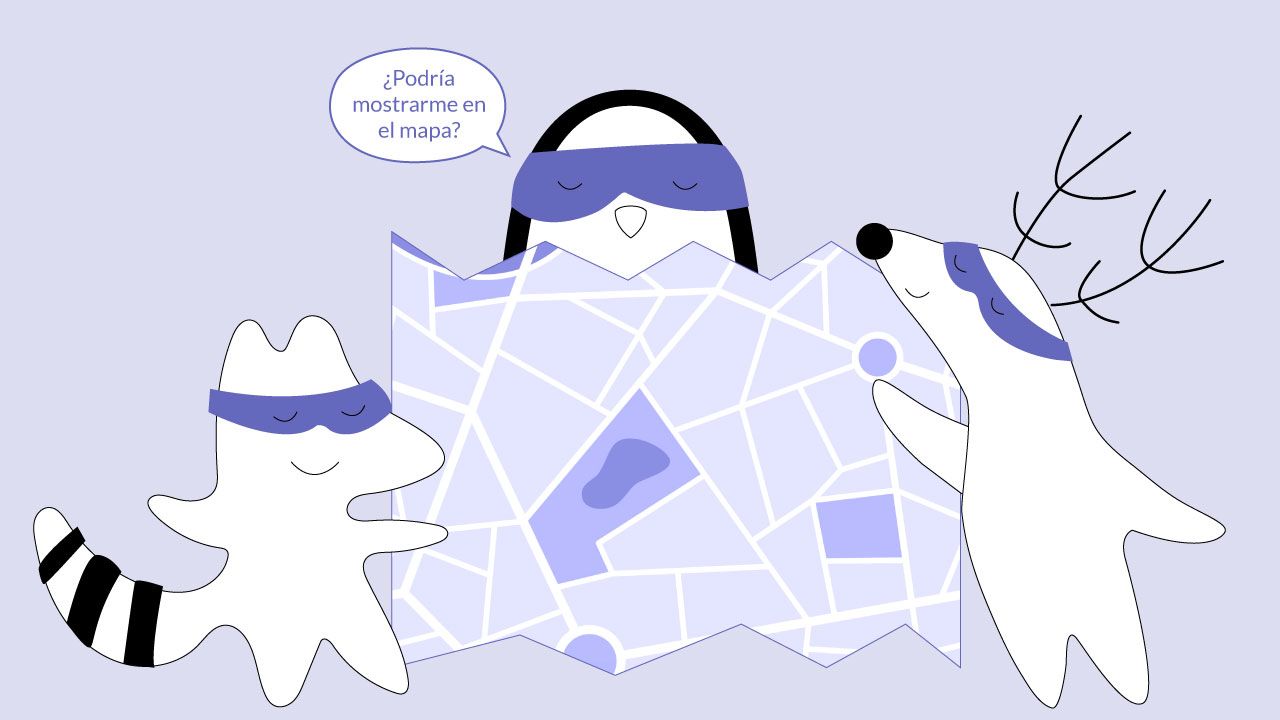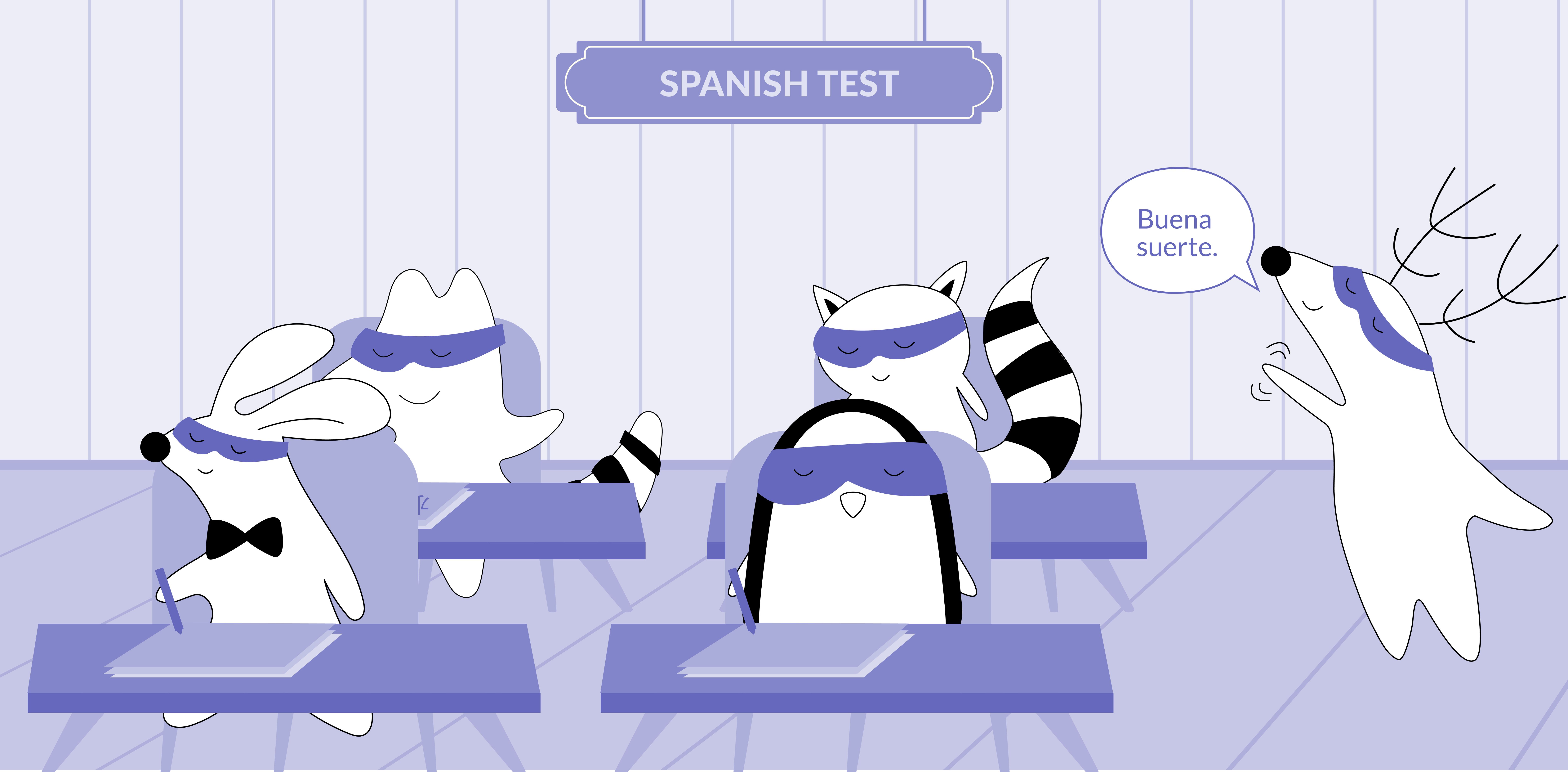
When traveling to a foreign country, it's important to always be prepared. While using GPS on your phone is very convenient, you can never know when you won’t be able to find a signal or a charging point. For such situations, you can keep an English-Spanish dictionary at hand.
However, in order to make your traveling experience to a Spanish-speaking country as stress-free as possible, it's important to learn a few phrases in the local language. It can be a daunting task for some, but with a few Spanish lessons and a little practice, it can be a breeze. In this article, we'll teach you how to ask for directions in Spanish.
Whether you're looking for the nearest pharmacy or trying to find your way back to your hotel, these phrases will come in handy. The most important thing to remember is to use the correct verb tense and to be polite. Here's a guide on how to ask for directions in Spanish, step-by-step:
Learn Spanish with Langster
Requesting Directions in Spanish
Starting a conversation with a foreigner or a native speaker can be a bit scary, not to mention the stress you feel when you get lost in a strange city. However, it can also be a great opportunity to practice both your listening skills and pronunciation. Who knows? You may even get to know the locals.
As such, when you learn basic Spanish vocabulary for traveling and keep an action plan in mind on how to start a conversation with a Spanish speaker, you will help make your trip worry-free. Here's how to ask for directions step-by-step:
- Start with a greeting. When you're ready to ask for directions, start with a greeting. You can say "Hola" (Hello), "Buenos días" (Good morning), or "Buenas tardes" (Good afternoon).
- Use the phrase ¿Podría ayudarme?. Once you've greeted the person, you can ask for help with the phrase ¿Podría ayudarme? – Can you help me?. This is a polite way to ask for directions in Spanish.
- Explain your problem and ask for specific directions. Below, you will find several handy phrases that will help you be more specific in your request.
- Ask for clarification. If you're still not sure where you're supposed to go, don't hesitate to ask more questions. The person giving directions will be more than happy to help you out. You can also ask them to speak slower if you cannot catch everything they’re saying to you.
- Thank the person for their help. Once you've received directions, be sure to thank the person for their help. You can say "Gracias" (Thank you), "Muchas gracias" (Thank you very much), or "Gracias por su ayuda" (Thank you for your help).
Following these simple steps to get the directions you need in Spanish. With a little practice, you'll be able to overcome the language barrier in no time and feel more comfortable exploring a new city.

Basic Vocabulary to Ask for Directions in Spanish
You should also learn a few crucial words and phrases that will help you both formulate your questions and understand the person giving directions to you. Here are some of the most useful words you’ll need to remember:
Spanish
English
disculpa
excuse me, informal
disculpe
excuse me, formal
por favor
please
gracias
thank you
derecha
right
izquierda
left
a la derecha o izquierda
to the right or left
encima de
above
debajo de
below
cerca de
near
al lado de
next to
en la esquina de
at the corner of
detrás de
in the back of
You should also be able to name particular places you might be looking for during the trip. Some of the most common nouns you may need include:
Spanish
English
restaurante
restaurant
farmacia
pharmacy
museo
museum
parque nacional
national park
centro comercial
shopping mall
parada de autobús
bus stop
calle
street
Common Spanish Phrases to Ask for Directions
There are a few common phrases that you can use to ask for directions in Spanish. Here are a few of the most basic and essential phrases to get you started:
¿Podría ayudarme?
When asking for directions, one of the most important phrases to know is ¿Podría ayudarme? This phrase means "Can you help me?" in Spanish. It's a polite and respectful way to ask for help at any time, like when you're lost or don't know where you're going.
Spanish
English
¿Podría ayudarme?
Can you help me?
You can also begin your question with the word disculpa or disculpe to sound even more polite.
Spanish
English
Disculpe, ¿puede ayudarme?
Excuse me, can you help me?
¿Dónde está…?
The phrase ¿Dónde está…? can be used to ask for the location of a particular place. You can also use this phrase to ask for general directions, or where things are in a building.
Spanish
English
¿Dónde está…?
Where is…?
For example, if you're looking for the stairs, you can say ¿Dónde están las escaleras?, which literally translates as “Where are the stairs?”
Some common answers to ¿Dónde está…? can include the following phases:
Spanish
English
por aquí
this way
por allá
that way
gire a la izquierda
turn left
gire a la derecha
turn right
sigue derecho
go straight ahead

¿Podría decirme cómo llegar a...?
If you're looking for directions to a specific site, you can say ¿Podría decirme cómo llegar a...? use followed by the name of the place. This phrase means "Can you tell me how to get to...?" in Spanish. You can use it to ask for directions to specific places, like the nearest restaurant, museum, bus stop, your hotel, or famous landmarks.
Spanish
English
¿Podría decirme cómo llegar a...?
Can you tell me how to get to...?
Alternatively, you can say ¿Me puede indicar el camino a…? which means “Can you show me the way to…?” or use the phrase ¿Cómo llego a…? This phrase means "How do I get to…?" in Spanish.
Spanish
English
¿Me puede indicar el camino a…?
Can you show me the way to…?
¿Cómo llegó a…?
How do I get to…?
For example, if you're looking for directions to the airport, you can say ¿Cómo llegó al aeropuerto?
¿Está lejos?
If you want to know how far away something is, use this phrase.
Spanish
English
¿Está lejos?
Is it far?
¿Lo puedes repetir, por favor?
This phrase is useful if you didn't quite catch what the person said. You can also use it to confirm that you understood the answer correctly.
Spanish
English
¿Lo puedes repetir, por favor?
Can you repeat that, please?
Alternatively, you can use a short and simple ¿Cómo? if you have to ask someone to repeat one more time.
Spanish
English
¿Cómo?
Come again?
¿Puedes hablar más despacio, por favor?
If you still cannot understand the answer, you can ask the other person to speak slower. In this case, you need to say ¿Puedes hablar más despacio, por favor? which means “Can you please speak more slowly?”
Spanish
English
Disculpa, no entendí bien. ¿Puedes hablar más despacio, por favor?
Sorry, I didn't get it. Can you please speak more slowly?
Alternatively, you can use the phase ¿Lo puedes repetir más lento, por favor? to ask them to repeat the directions slowly.
Spanish
English
¿Lo puedes repetir más lento, por favor?
Can you please repeat it slowly?
¿Podría mostrarme en el mapa?
If you need more specific help or you cannot understand everything you hear, you can use the phrase ¿Podría mostrarme en el mapa? In Spanish, it means "Can you show me on the map?" This is a great phrase to use if you're very lost and need help getting back on track.
Spanish
English
¿Podría mostrarme en el mapa?
Can you show me on the map?

¿Hablas inglés?
If the person you're talking to doesn't seem to understand your Spanish, you can try asking if they speak English. This phrase can also come in handy if you just can’t find the right Spanish words to explain your request or find yourself in a dire situation.
Spanish
English
¿Hablas inglés?
Do you speak English?
The Bottom Line

Asking a stranger for help can seem intimidating, but it can also be a rewarding experience. Think of asking a foreigner for directions as an opportunity to practice your Spanish with a native speaker. This is an excellent opportunity to improve your conversational skills, get rid of faulty pronunciation and expand your Spanish vocabulary.
Keep in mind that not everyone will be able to help you, but it's always worth a try. With these phrases in your arsenal, you'll be ready to tackle anything during your travels. And in order to diversify your Spanish lessons, you can download our Langster app and learn Spanish with bite-size stories and audio from native speakers. Safe travels!









